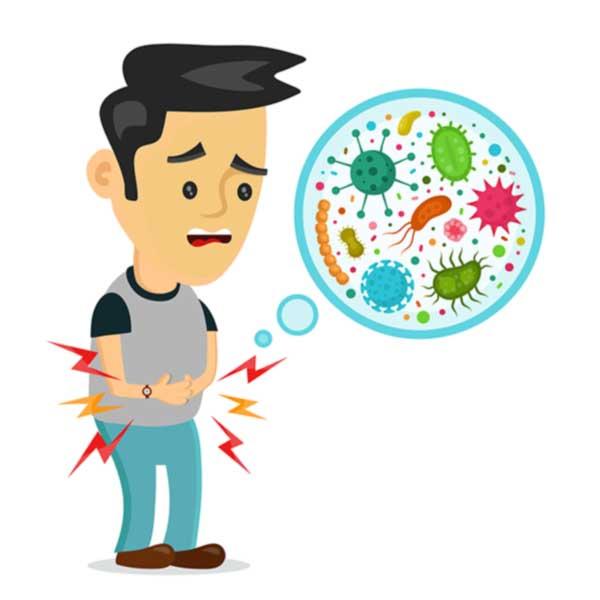Top Deadly Foodbourne Illness Outbreaks

People generally want to believe that their food and water supplies are safe. They take for granted that they can eat a meal or drink a glass of water without falling ill. However, this confidence was not always commonplace, nor perhaps should it be so today, as evidenced by some of the deadliest outbreaks of food-borne illnesses in history. These outbreaks demonstrate why unsafe food and water can lead to tragedy and why victims of these outbreaks today should get immediate medical help at the emergency room.
Jewel Food Store Salmonella Milk Outbreak
In 1985, five states witnessed the spread of salmonella that was found in supplies of Jewel Food Store’s 2 percent milk. The contaminated milk was sold in Michigan, Indiana, Illinois, Iowa and Wisconsin. The milk was bottled at a dairy farm that operated under the store’s label. By the end of the outbreak, two people had died.
Ithaca Typhoid Fever Outbreak
When the Six Mile Creek dam was being built in 1903, its construction contributed to the spread of typhoid in the area through the water supply close to the construction site. Infected workers on the dam were thought to be the source of the contamination. Even worse, Cornell University played a significant role in covering up the link between the workers and the outbreak.
The typhoid outbreak saw 82 people fall ill and die with this sickness. Out of the 82 deaths, 29 were those of Cornell University students whose water supply at the school was contaminated.
Long Island Typhoid Outbreak
The Long Island typhoid outbreak happened as a result of the oysters harvested from contaminated waters in the area. The oysters were also consumed by people in Chicago, and Washington D.C., as well as throughout New York. In all, more than 1500 people fell ill after eating the contaminated oysters, with 150 of those affected dying from typhoid.
Boston Streptococcus Outbreak
In 1911, 48 people died after drinking milk that was contaminated with streptococcus. The milk was delivered door-to-door, which put much of the public at risk at that time.
Listeria Outbreak
One of the more recent food-borne illness outbreaks involved contaminated cantaloupes that were grown and harvested in Colorado. In fact, during the spring and summer of 2011, the toxin listeria was spread through these cantaloupes throughout 28 states, infecting 146 people and killing 36. Some of the victims were pregnant women and children.
Salmonella Outbreak
Salmonella was spread throughout 46 states in 2008 and 2009, the result of a supply of contaminated peanut butter. This outbreak saw 714 people affected by salmonella poisoning, with 9 people losing their lives to it.
California Olives Botulism Outbreak
In 1919, California exported a supply of olives contaminated with botulism to inner states. This outbreak witnessed 19 people die after consuming the affected olives.
Given the alarming frequency of death that can happen in food-borne illness outbreaks, it is vital that people know when to seek emergency medical help if they suspect that they have been contracted such contamination. However, knowing the symptoms of food poisoning and being able to distinguish them from mild that will resolve on their own to severe that require immediate ER attention can be confusing.
In general, mild symptoms of food poisoning may mimic those of gastrointestinal distress, or the stomach flu. These signs include vomiting, diarrhea and stomach cramps. Mild cases generally resolve themselves in less than a week’s time, if not within 24 hours after their onset.
During the time that people are ill with food poisoning, it is vital that they rest and try to stay hydrated. With proper hydration and rest, most people can recover without complications.
However, serious cases of food-borne contamination should be addressed with utmost concern, and people should not hesitate to go to the ER if they have these symptoms or meet these criteria:
- Pregnant or nursing
- Severe diarrhea
- Dizziness
- Blurred vision
- Fever
- No improvement after a week
- Severe dehydration
These more severe symptoms can typically only be addressed in a medical setting. People should not try to treat themselves at home. Doing so could result in their suffering dire consequences or even death. Pregnant women, women who are nursing, children, infants and the elderly in particular should get emergency help, as these groups often are at most risk of dying from food-borne illnesses.
As safe as the food and water supplies are today, the threat always remains that food-borne contamination can still occur. These outbreaks throughout history demonstrate the serious nature of what happens when toxins or infectious diseases infiltrate the supply of water and food in the country. When people think that they have consumed unclean and unsafe food or drink, they should know the symptoms of food poisoning and understand when it is critical that they go to the emergency room for help.




